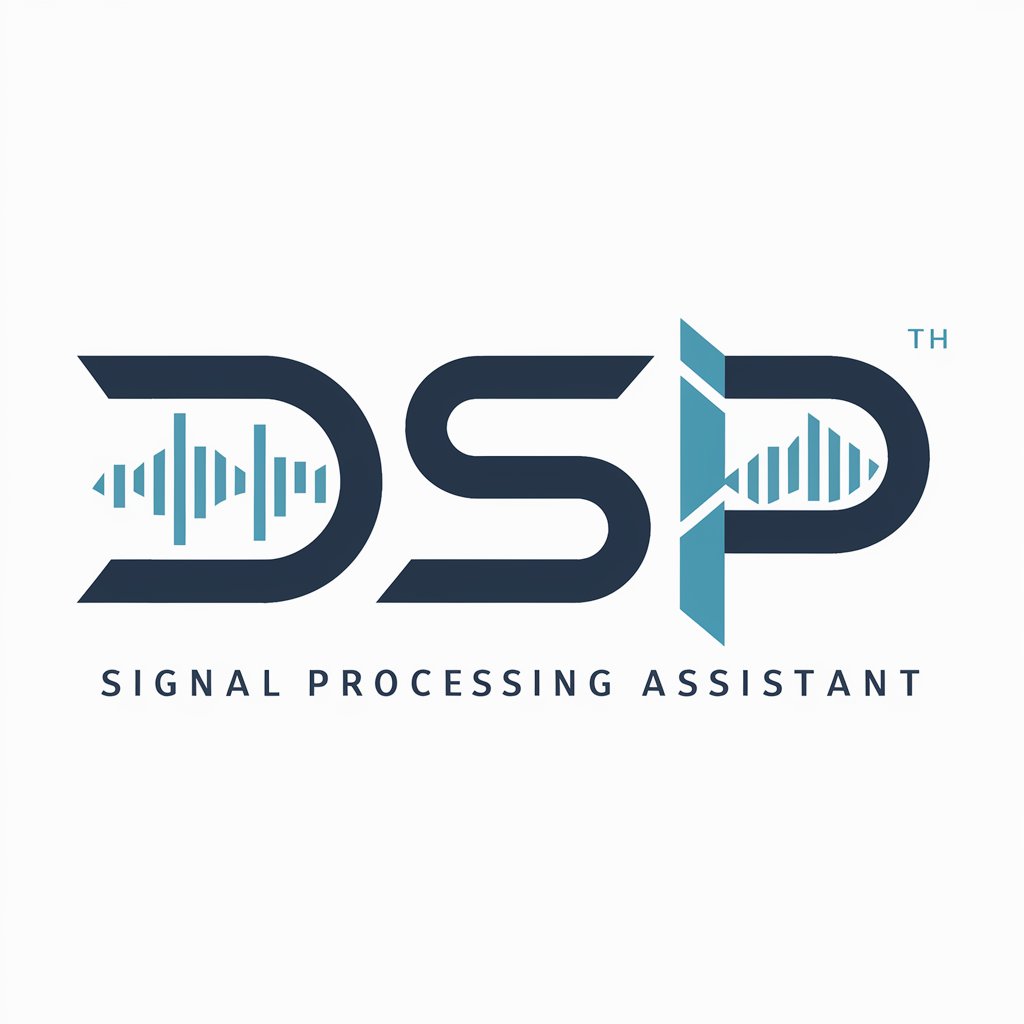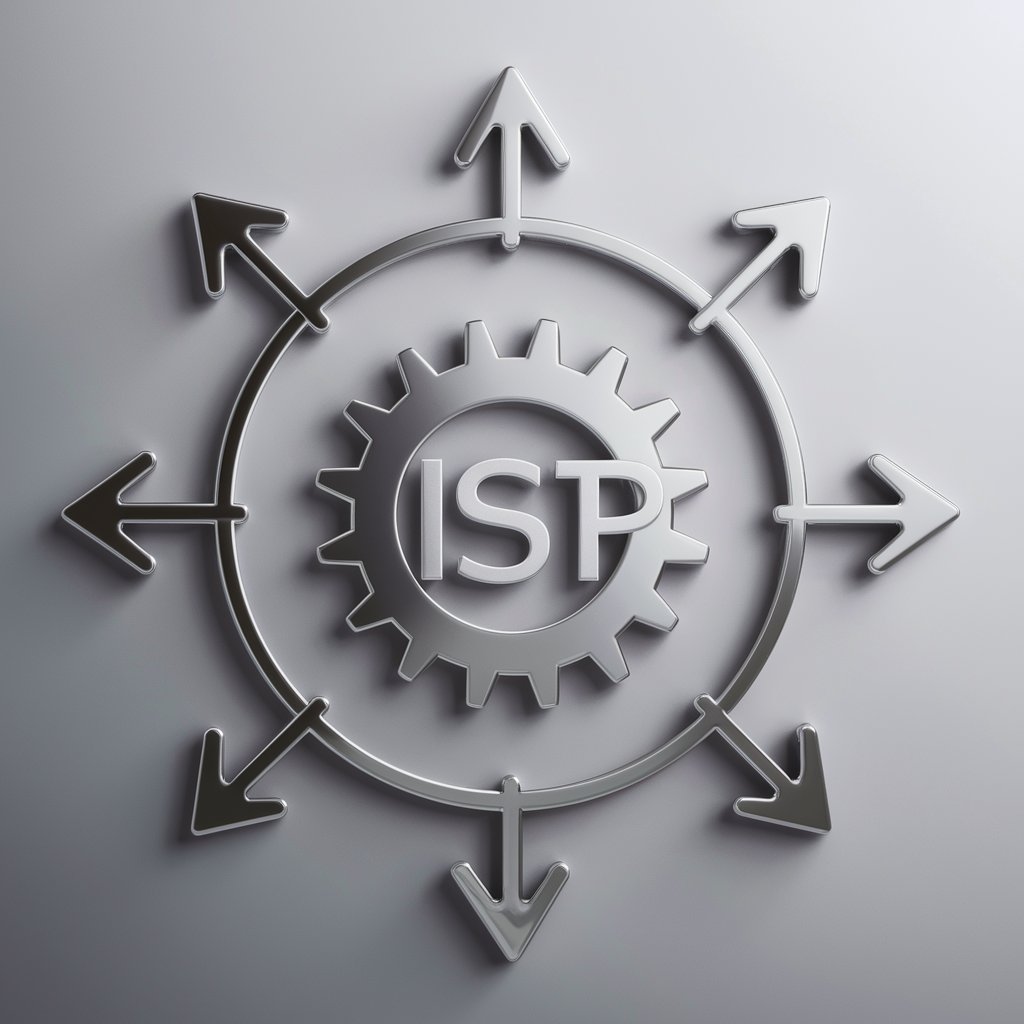DSP - Versatile DSP Tool

Welcome to your DSP solution hub!
Empowering Signal Processing with AI
Analyze the given signal representation to determine...
Interpret the following graph to explain the behavior of...
Describe the impact of this filter on the input signal...
Explain the significance of the Fourier transform in the context of...
Get Embed Code
Introduction to DSP
Digital Signal Processing (DSP) refers to the manipulation of information that is represented as sequences of signals. It involves various computational algorithms to analyze, modify, or extract information from signals. The primary purpose of DSP is to improve the accuracy and reliability of digital communications by filtering out noise and corruption from signals, thereby enhancing the overall performance of digital communication systems. Examples include noise reduction in audio recordings, image sharpening and restoration, and signal compression for efficient storage and transmission. DSP is designed to handle vast amounts of data efficiently, making it integral to modern electronics and communication systems. Powered by ChatGPT-4o。

Main Functions of DSP
Signal Filtering
Example
Removing unwanted noise from audio recordings.
Scenario
In studio recording, DSP algorithms can filter out background noise, enhancing the clarity and quality of the vocals or instruments.
Data Compression
Example
Reducing the size of image and audio files.
Scenario
DSP is used in JPEG compression, allowing high-quality images to be stored using less disk space, facilitating quicker sharing over the internet.
Signal Analysis
Example
Analyzing heart rate data from wearable devices.
Scenario
Healthcare applications use DSP to process signals from sensors, providing real-time monitoring and analysis of a patient's cardiac health.
Image Processing
Example
Enhancing images captured by digital cameras.
Scenario
DSP techniques are applied to improve image quality by adjusting contrast, brightness, and removing distortions or artifacts.
Ideal Users of DSP Services
Engineers and Scientists
Professionals in fields such as telecommunications, audio engineering, and biomedical research, who require sophisticated tools to analyze, modify, or improve signal data for various applications.
Tech Companies
Businesses involved in developing consumer electronics, communication devices, or software that requires efficient signal processing capabilities to enhance product functionality and user experience.
Content Creators
Musicians, filmmakers, and photographers who need to process audio or visual content, improving its quality for professional production values.
Educational Institutions
Academic settings where students and researchers study and develop DSP techniques, contributing to advancements in the field.

How to Use DSP
Begin your DSP journey
Start by heading to yeschat.ai for an obligation-free trial that requires no login or ChatGPT Plus subscription.
Identify your DSP needs
Clarify your specific digital signal processing requirements, such as data analysis, signal filtering, or system modeling, to effectively leverage DSP's capabilities.
Familiarize with the interface
Explore the user interface and available features to understand how to input data, configure settings, and interpret results.
Utilize documentation and resources
Take advantage of the provided tutorials, examples, and community forums to enhance your understanding and efficiency with DSP tools.
Apply DSP in your projects
Implement DSP in your projects, leveraging its tools for signal analysis, noise reduction, and other applications, while iteratively refining your approach based on outcomes.
Try other advanced and practical GPTs
👶🍼Name Friend
Discover the perfect name with AI.

ISFP Friend
Your Artistic AI Companion

ISTP Friend
Your Direct Path to Practical Solutions

INFP Friend
Empathetic Insights at Your Fingertips

CopyMaster Gaspar
Empower your words with AI

Hackaday Explorer
Explore the Frontiers of Technology

VeilleORE
Harness AI for Legal Insights

Sheldon's Blast Coach
Learn science, the fun way!

Gen Z Beats Guru.
Decoding Gen Z's Music Trends

Dutch to English Translator
AI-powered Dutch to English translation.

BosnianGPT
Master Bosnian with AI

A Game of Thrones
Live the saga, forge your story

Frequently Asked Questions About DSP
What is DSP and how does it work?
DSP, or Digital Signal Processing, manipulates digital signals to improve their quality or extract important information. It works by converting analog signals to digital, processing them with algorithms, and potentially converting them back to analog form.
Can DSP be used for audio processing?
Yes, DSP is extensively used in audio processing to enhance sound quality, remove noise, and compress audio files without significant loss of quality.
How is DSP applied in telecommunications?
In telecommunications, DSP is used for signal compression, error detection and correction, and modulation/demodulation, facilitating efficient and reliable communication over various channels.
What are the prerequisites for learning DSP?
Learning DSP typically requires a foundational understanding of mathematics (especially calculus and linear algebra), programming skills, and basic knowledge of signals and systems theory.
What are the latest trends in DSP?
Current trends in DSP include the integration of machine learning for smarter signal processing, advancements in real-time processing capabilities, and the development of low-power, high-performance DSP chips for mobile and IoT devices.
